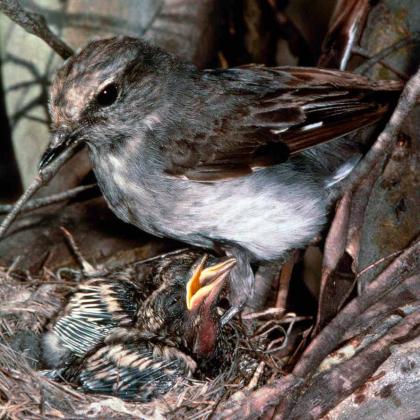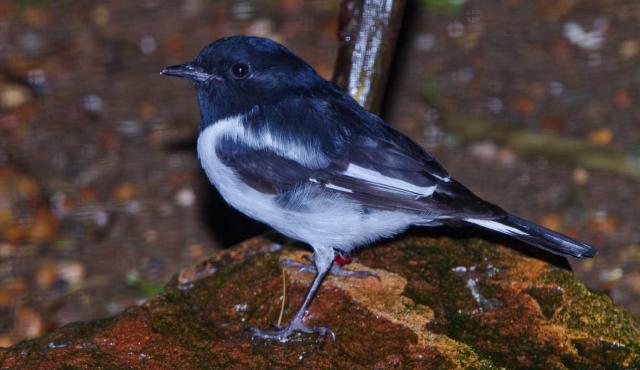A range of teacher professional learning programs will be developed to accompany the Biodiversity of the Western Volcanic Plains online outreach...



Hooded Robin
Melanodryas cucullata cucullata
Breeds from July-December, generally after rain in dry areas. An open cup nest is built on a stump or in a trunk cavity or branch 1-6 m high. Three or more birds may attend the nest.
| Details | Description |
| Type | Bird |
| Group | Robin |
| Identifying Characteristics | |
| Distinctive Markings | The male has a very prominent black hood covering the head, back and rounded bib on the breast. |
| Diet | Carnivore, invertebrates. |
| Habitat | Dry eucalypt, woodland and cleared paddocks with stumps, dead trees or regrowth. |
| Native Status | Native to Australia |
| Sounds | A descending "chierp, shwep-chep-chep". |
| Taxonomy | |
| Phylum | Chordata |
| Class | Aves |
| Order | Passeriformes |
| Family | Petroicidae |
| Genus | Melanodryas |
| Species | cucullata cucullata |

Distribution maps indicate current and historic locations where species have been sighted.
Source: Atlas of Living Australia
| Conservation Status | |
| DEPI Advisory List | Near threatened |
| FFG Act | Listed as threatened |
| EPBC Act | Not listed |
The conservation status of species is listed within Victoria and Australia.
The Department of Environment and Primary Industry (DEPI) Advisory List consists of non-statutory advisory lists of rare or threatened flora and fauna within Victoria.
The Flora and Fauna Guarantee Act 1988 (FFG Act) lists threatened species in Victoria. Under the Act, an Action Statement is produced for each listed species.
The Environment Protection and Biodiversity Conservation Act 1999 (EPBC Act) is the Australian Government’s key piece of environmental legislation, listing nationally threatened native species and ecological communities.



